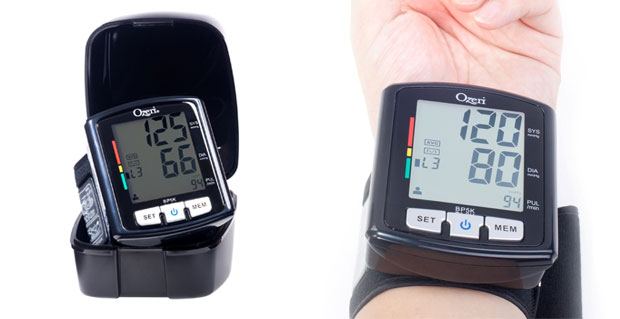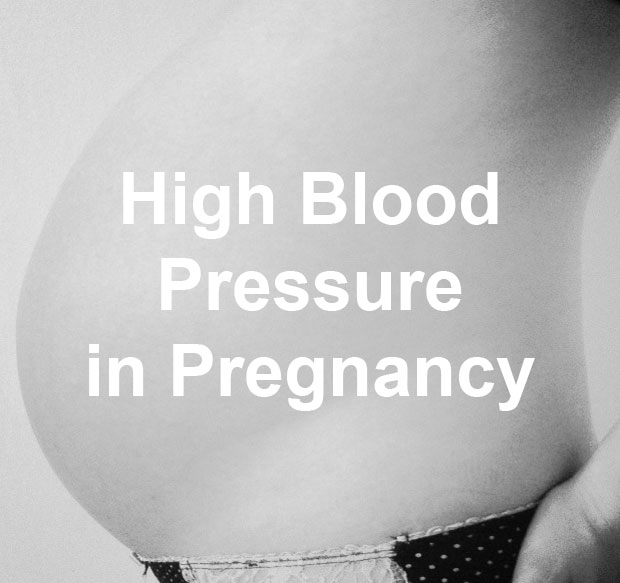High Blood Pressure in Pregnancy
High Blood Pressure in Pregnancy
Gestational hypertension is the term used for high blood pressure that occurs after you’re 20 weeks pregnant. If you had high blood pressure earlier in your pregnancy, then you probably had it before getting pregnant too and then it’s regarded as essential chronic hypertension.
Blood pressure is recorded as a higher (systolic) pressure and a lower (diastolic) pressure, for example 120/80 mm Hg (millimetres of mercury, or mm Hg for short) or 120 over 80. The systolic number records your blood pressure as your heart beats and pushes the blood around your body and the diastolic number is your blood pressure when your heart relaxes between beats.
The ideal blood pressure we should all aim for is 120 over 80 or lower.
When blood pressure is raised, your heart has to work harder to pump the blood around the body and this can affect the heart muscle.
Hypertension is common in pregnancy and affects around 10-15% of pregnant women. There are three different levels of severity and they are:
- mild hypertension refers to a blood pressure between 140/90 and 149/99 mm Hg
- moderate hypertension refers to a blood pressure between 150/100 and 159/109 mm Hg
- severe hypertension refers to a blood pressure of 160/110 or higher
The lowest kind usually doesn’t need any treatment, just monitoring to make sure it doesn’t get any higher.
During my first pregnancy and during this one too, I had some blood pressure readings at the midwife’s that were slightly raised, but just the diastolic pressure and not to any extreme levels. You are still classed as having high blood pressure if just the diastolic pressure is high but it needs to be higher than 110 to be classed as high.
Your blood pressure is classed as high if two readings, four hours apart, show that your blood pressure is 140/90 or higher. If your midwife discovers that you have high blood pressure, you will be sent for further tests at the hospital.
Most cases of mild or moderately high blood pressure will not cause any problems for the mother or the baby during pregnancy, but the earlier in pregnancy it goes up, the greater is the risk of developing pre-eclampsia later on. Pre-eclampsia is a condition that influences how well the placenta works and one of the symptoms is high blood pressure. If the placenta is not working properly, this can affect how well your baby grows because he/she may not be getting all the nutrients and oxygen he/she needs.
Another sign of pre-eclampsia is protein in the urine which is something that your midwife tests for regularly. Your risk of developing high blood pressure and pre-eclampsia is higher if you are overweight so staying at a healthy weight is advisable. Eating healthily, staying active and not eating too much salt also helps keep your blood pressure healthy.
If you catch pre-eclampsia early, your baby can be monitored and the condition can be treated. If you have high blood pressure when it’s getting close to your baby’s birth, you are more likely to have an induction and you’ll also need frequent monitoring during labour.
Pre-eclampsia affects around 2-5% of pregnancies and if untreated, it can lead to seizures and, on rare occasions, the mother’s death. It’s very important to attend all your antenatal appointments and to monitor your blood pressure regularly and keep it low.
During my last pregnancy, I borrowed a blood pressure monitor from my father-in-law so that I could check my blood pressure at home too. This time around, I’ve got my own, more advanced, blood pressure monitor. Mine is the Ozeri CardioTech Pro Series BP5K Digital Blood Pressure Monitor with Voice-Guided Operation & Intelligent Hypertension Indicator and you can see my review of it here.
Read more about high blood pressure in pregnancy on the NHS wesbite or Babycentre.co.uk. Contact your midwife or GP if you are worried about anything.





